
Burne Hogarth was an American artist and educator, best known for his work on the Tarzan newspaper comic strip and his series of anatomy books for artists.

Alexander Toth was an American cartoonist active from the 1940s through the 1980s. Toth's work began in the American comic book industry, but he is also known for his animation designs for Hanna-Barbera throughout the 1960s and 1970s. His work included Super Friends, Fantastic Four, Space Ghost, Sealab 2020, The Herculoids and Birdman. Toth's work has been resurrected in the late-night, adult-themed spin-offs on Cartoon Network’s late night sister channel Adult Swim: Space Ghost Coast to Coast, Sealab 2021 and Harvey Birdman, Attorney at Law.
Dudley Dexter Watkins was an English cartoonist and illustrator. He is best known for his characters Oor Wullie and The Broons; comic strips featuring them have appeared in the Scottish newspaper The Sunday Post since 1936, along with annual compilations. Watkins also illustrated comics such as The Beano, The Dandy, The Beezer and Topper, and provided illustrations for Christian stories. Watkins was posthumously inducted into the British Comic Awards Hall of Fame in 2015.

Clarence Matthew Baker was an American comic book artist and illustrator, best known for drawing early comics heroines such as the costumed crimefighter Phantom Lady, and romance comics. Active in the 1940s and 1950s Golden Age of comic books, he is one of the first known African-American artists to find success in the comic-book industry. He also penciled St. John Publications' digest-sized "picture novel" It Rhymes with Lust (1950), the first graphic novel despite that term not having been coined at the time.
Seymour "Sy" Barry is an American comic-book and comic-strip artist, best known for being the artist of the strip The Phantom for more than three decades.
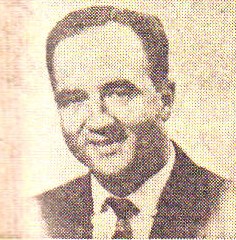
Jack R. Keller was an American comic book artist best known for his 1950s and 1960s work on the Marvel Comics Western character Kid Colt, and for his later hot rod and racecar series at Charlton Comics.
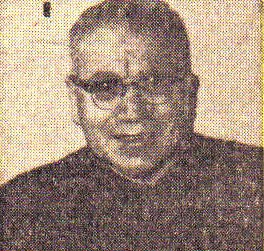
Paul J. Reinman was an American comic book artist best known as one of Jack Kirby's frequent inkers during the period comics fans and historians call the Silver Age of Comic Books. This included the first issues of The Incredible Hulk and The X-Men.

Thomas P. Gill was an American comic book artist best known for his nearly 11-year run drawing Dell Comics' The Lone Ranger.

Denis Gifford was a British writer, broadcaster, journalist, comic artist and historian of film, comics, television and radio. In his lengthy career, he wrote and drew for British comics; wrote more than fifty books on the creators, performers, characters and history of popular media; devised, compiled and contributed to popular programmes for radio and television; and directed several short films. Gifford was also a major comics collector, owning what was perhaps the largest collection of British comics in the world.
Paul Leroy Norris was an American comic book artist best known as co-creator of the DC Comics superhero Aquaman, and for a 35-year run as artist of the newspaper comic strip Brick Bradford.

Fred Kida was a Japanese-American comic book and comic strip artist best known for the 1940s aviator hero Airboy and his antagonist and sometime ally Valkyrie during the period fans and historians call the Golden Age of Comic Books. He went on to draw for Marvel Comics' 1950s iteration, Atlas Comics, in a variety of genres and styles, and then again for Marvel superhero titles in the 1970s. He drew the company's The Amazing Spider-Man newspaper comic strip during the early to mid-1980s. Kida also assisted artist Dan Barry on the long-running strip Flash Gordon from 1958 to 1961 and then again from 1968 to 1971.
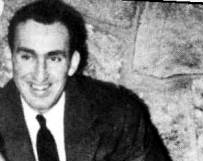
Creig Valentine Flessel was an American comic book artist and an illustrator and cartoonist for magazines ranging from Boys' Life to Playboy. One of the earliest comic book illustrators, he was a 2006 nominee for induction into the comics industry's Will Eisner Hall of Fame.

John Adrian Darley Dingle, known professionally as Adrian Dingle, was a Cornish-Canadian artist. In the 1940s, he was a creator of comic books, including Nelvana of the Northern Lights.
Frederick B. Guardineer was an American illustrator and comic book writer-artist best known for his work in the 1930s and 1940s during what historians and fans call the Golden Age of Comic Books, and for his 1950s art on the Western comic-book series The Durango Kid.
Bernard Baily was an American comic book artist best known as co-creator of the DC Comics characters the Spectre and Hourman, and a comics publisher, writer, and editor.

Howard Nostrand was an American cartoonist and illustrator best known for his 1950s comic book stories and his 1959-60 syndicated comic strip Bat Masterson, based on the television series.

Illustrated Chips was a British comic magazine published between 26 July 1890 and 12 September 1953. Its publisher was the Amalgamated Press, run by Alfred Harmsworth. Priced at a half-penny, Illustrated Chips was among a number of Harmsworth publications that challenged the dominance in popularity of the "penny dreadfuls" among British children.
Frederick Thomas (Freddie) Adkins was a British comics artist who worked for the Amalgamated Press from the 1920s to the 1950s.
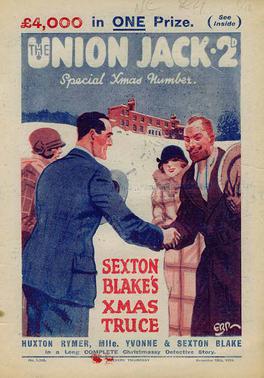
Eric Robert Parker was a prolific British illustrator and comics artist best known for illustrating the adventures of Sexton Blake in various periodicals.
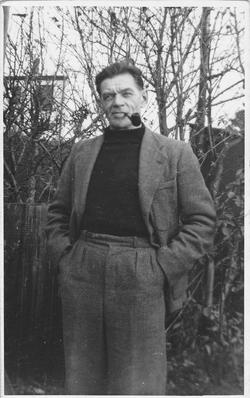
Frank John Minnitt was a British illustrator and cartoonist who drew for over 100 comic papers from the 1920s to the 1950s. He is perhaps best known for his depictions of Billy Bunter in the comic Knockout between 1939 and 1958.














